Many of our invasive weeds are edible including the beloved Blackberry Bush and the familiar Dandelion weed. Wild Fennel is a common weed originating from the Mediterranean, and while it resembles dill, it offers a distinct anise, or licorice, aroma and flavour. I love making a big batch of this wild fennel pesto in the spring or fall, with the fennel is ready to harvest, and freezing it in mason jars to enjoy throughout the year.
Nutrition
Wild Fennel As Medicine
Herbalists will prescribe fennel for increasing lactation, promoting menstruation, facilitating birth, and increasing libido. It is also used for upper respiratory tract infections, coughs, bronchitis, cholera, backache, bedwetting, dyspepsia, flatulence, bloating, loss of appetite, and visual problems. Clinical evidence suggests that fennel is possibly effective for relieving colic in infants (1,2).
Hazelnuts
Hazelnuts, like all nuts, come with a vast array of health benefits. Consumption has been linked to a reduced risk of cardiovascular (heart) disease, a decreased risk of type 2 diabetes, and they can also help lower post-meal spikes in blood sugar levels (3). Hazelnut farms can be found across so-called Vancouver Island and are harvested in the autumn, but once dried they can be purchased year-round from local suppliers. Hazelnuts were an original Indigenous food, though the variety we have access to now has changed with modern-day agriculture.
Dates
Dates are one of our best sources of potassium, an important mineral for heart health and to support muscle contractions. It is also one of my favourite natural sweeteners, and thanks to their fibre content, they don’t come with the sugar-spiking effect of regular table sugar.
Harvesting Wild Fennel
Wild Fennel vs Conventional Fennel
You have likely come across wild fennel many times, in your backyard, in an open field, or trailing your favourite walking path. Wild Fennel differs from the fennel bulb that we find in supermarkets – with wild fennel you can keep digging but you won’t find an edible bulb.
Harvesting Wild Fennel
Harvest your wild fennel from a clean source, away from roadsides and sprayed agricultural fields. If you have never harvested wild fennel before and want to experiment with any fennel recipe, harvest with someone who is familiar with it to ensure proper identification.
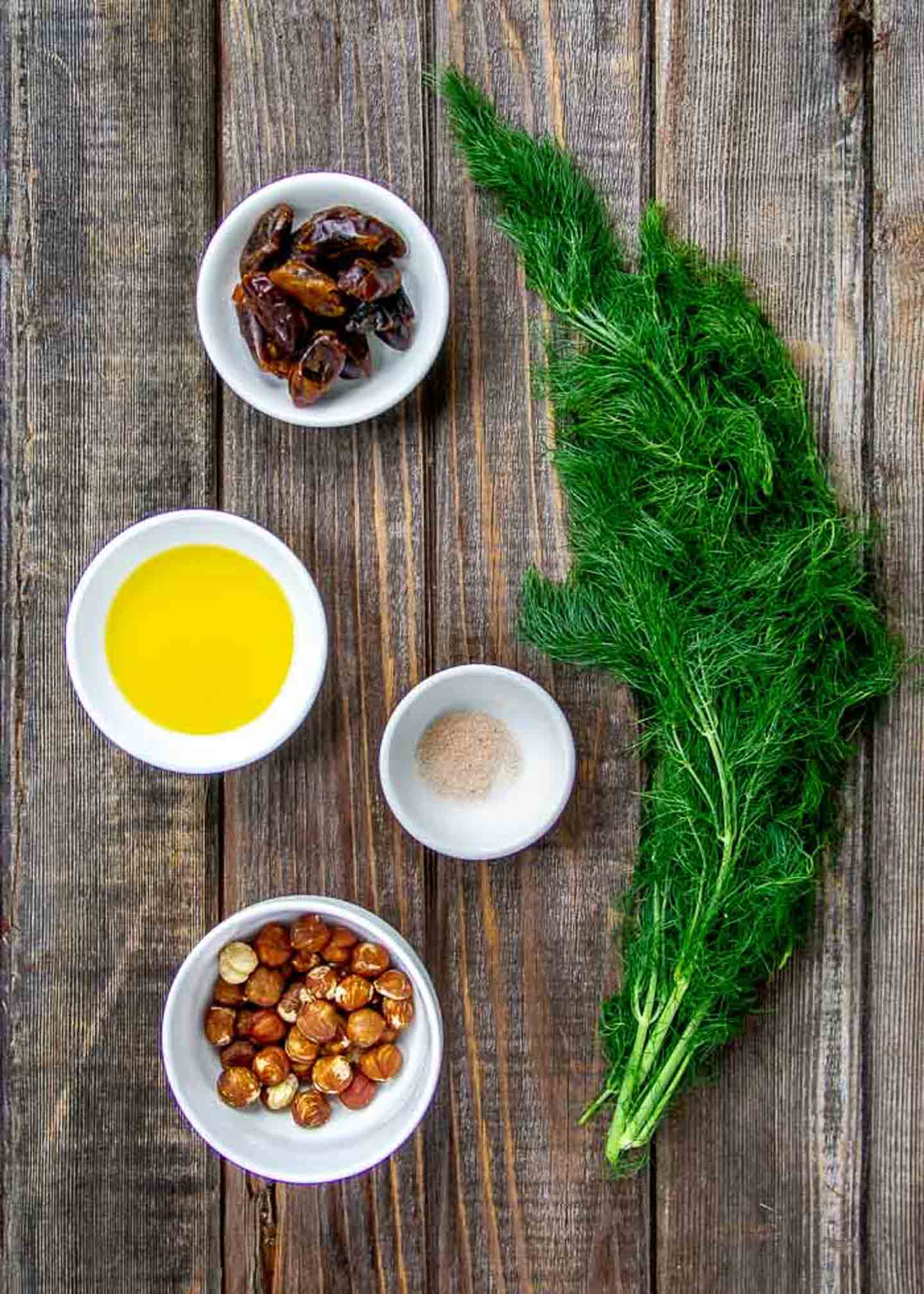
Ingredients for Wild Fennel Pesto – Wild Fennel, Dates, Oil, Salt, Hazelnuts (or any nut)
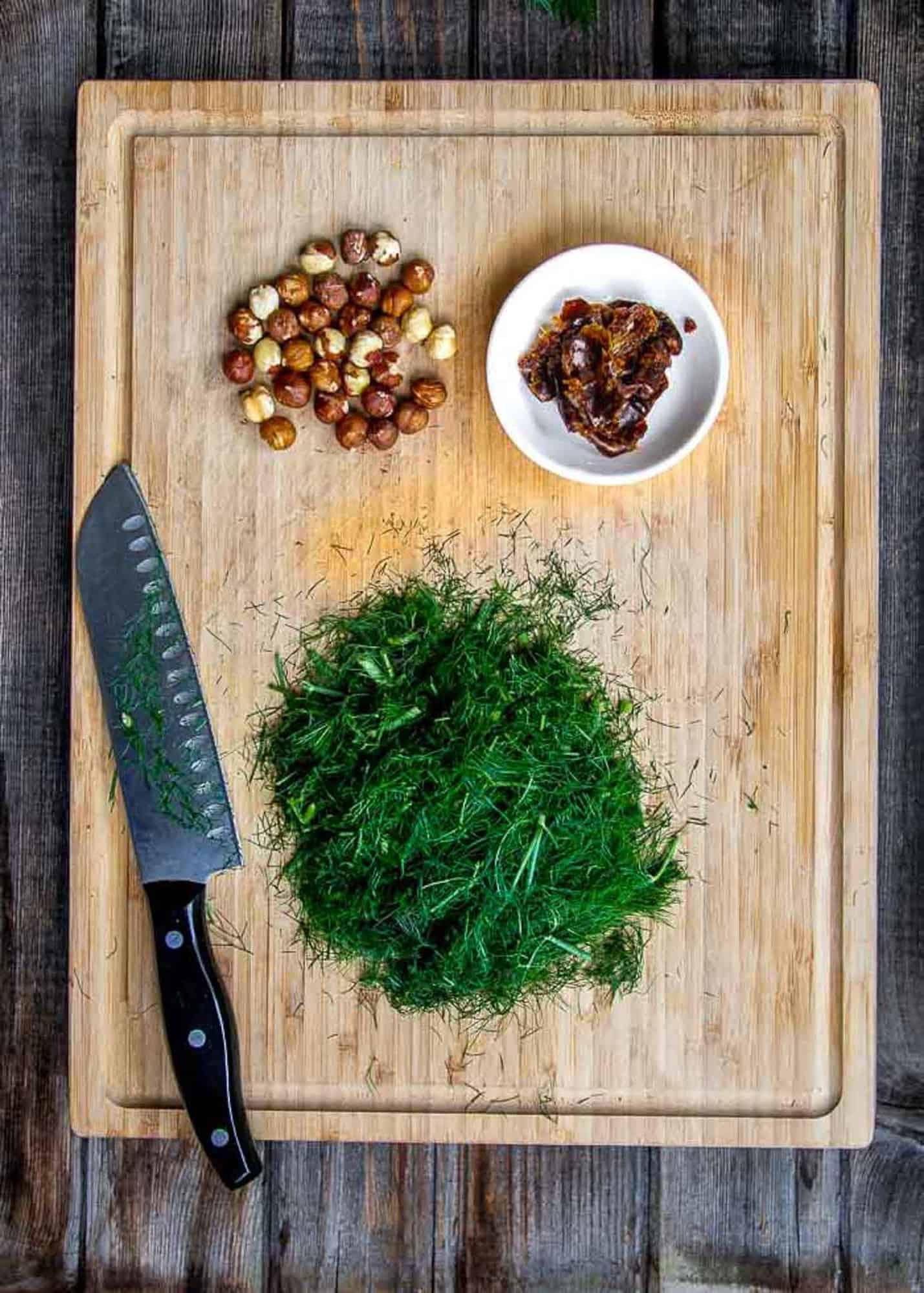
Prep the ingredients by roughly chopping the fennel, hazelnuts and soaked dates.
Preparing The Wild Fennel
Clean the wild fennel and remove any discoloured fronds. The stems can remain and there is no need to remove them. Roughly chop the wild fennel before adding it to the blender to help with the blending process and to ensure a smoother consistency. If you don’t have access to wild fennel, you can use the fronds of the common fennel bulb that can be found in supermarkets in season.
What To Serve It With
Here are a few of my favourite ways to enjoy:
- Serve with some soft goat cheese on some seedy crackers (try these Homemade Seed Crackers)
- Make a wild fennel pesto penne pasta
- Have this wild fennel pesto on baked salmon
- Have this wild fennel pesto baked on a flatbread as an appetizer
- Make an orzo and goat cheese wild fennel pesto salad
- Make a wild fennel pesto pizza topped with feta or goat cheese
Lebanese Wild Fennel Pesto Recipe
Ingredients
- 3 cups wild fennel packed
- 10 dates soaked*
- 1/2 cup hazelnuts whole
- 1/4 tsp salt
- 1/4 cup olive oil extra virgin
Instructions
- If your dates are hard, option to soak them in hot water for a few minutes while preparing the other ingredients. This will help the dates blend easier.
- Roughly chop the wild fennel. Add all of the ingredients into a high-speed blender or food processor. Process until the pesto ingredients are well incorporated and a smooth consistency forms.
- Store in an air-tight container in the refrigerator for up to 5 days. Make a large batch and freeze in individual containers to enjoy throughout the year.
Notes
Nutrition
References
1 Weizman Z, Alkrinawi S, Goldfarb D, et al. (1993) Efficacy of herbal tea preparation in infantile colic. Journal of Pediatrics
2 Elgayyar, M., Draughon, F. A., Golden, D. A., and Mount, J. R. (2001) Antimicrobial activity of essential oils from plants against selected pathogenic and saprophytic microorganisms. Journal of Food Protection
3 David J. A. Jenkins (2008) Possible Benefit of Nuts in Type 2 Diabetes. The Journal of Nutrition

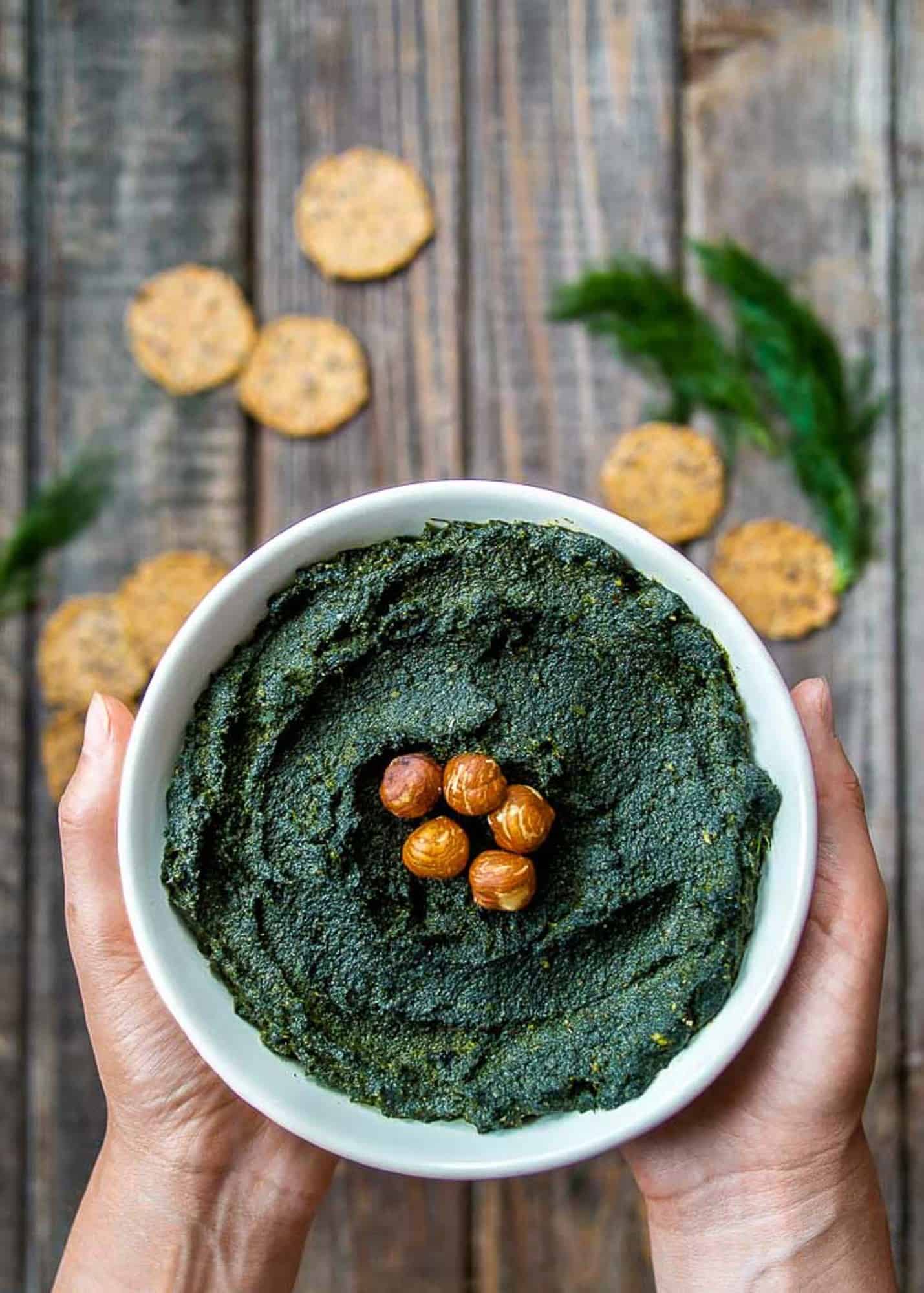
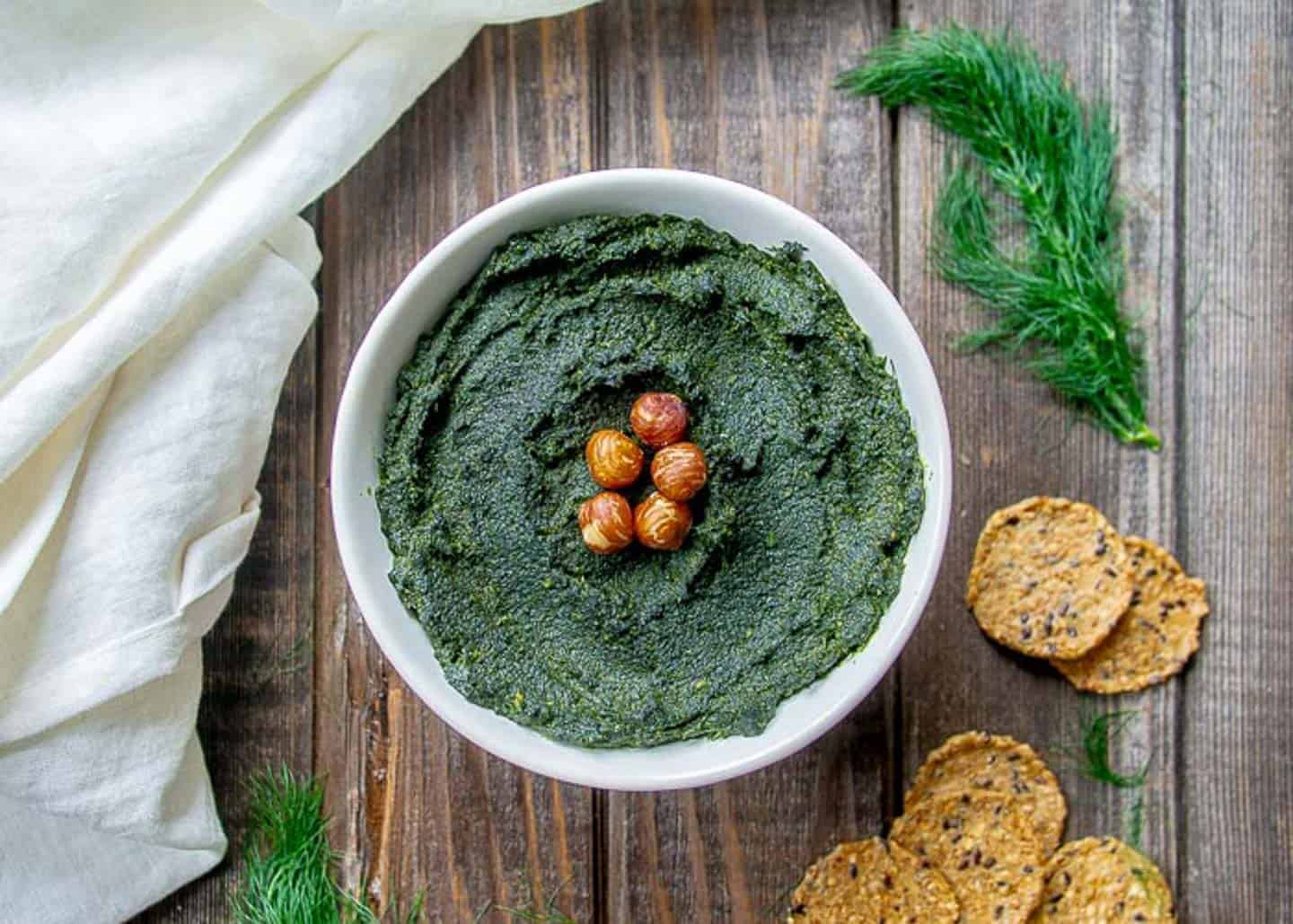
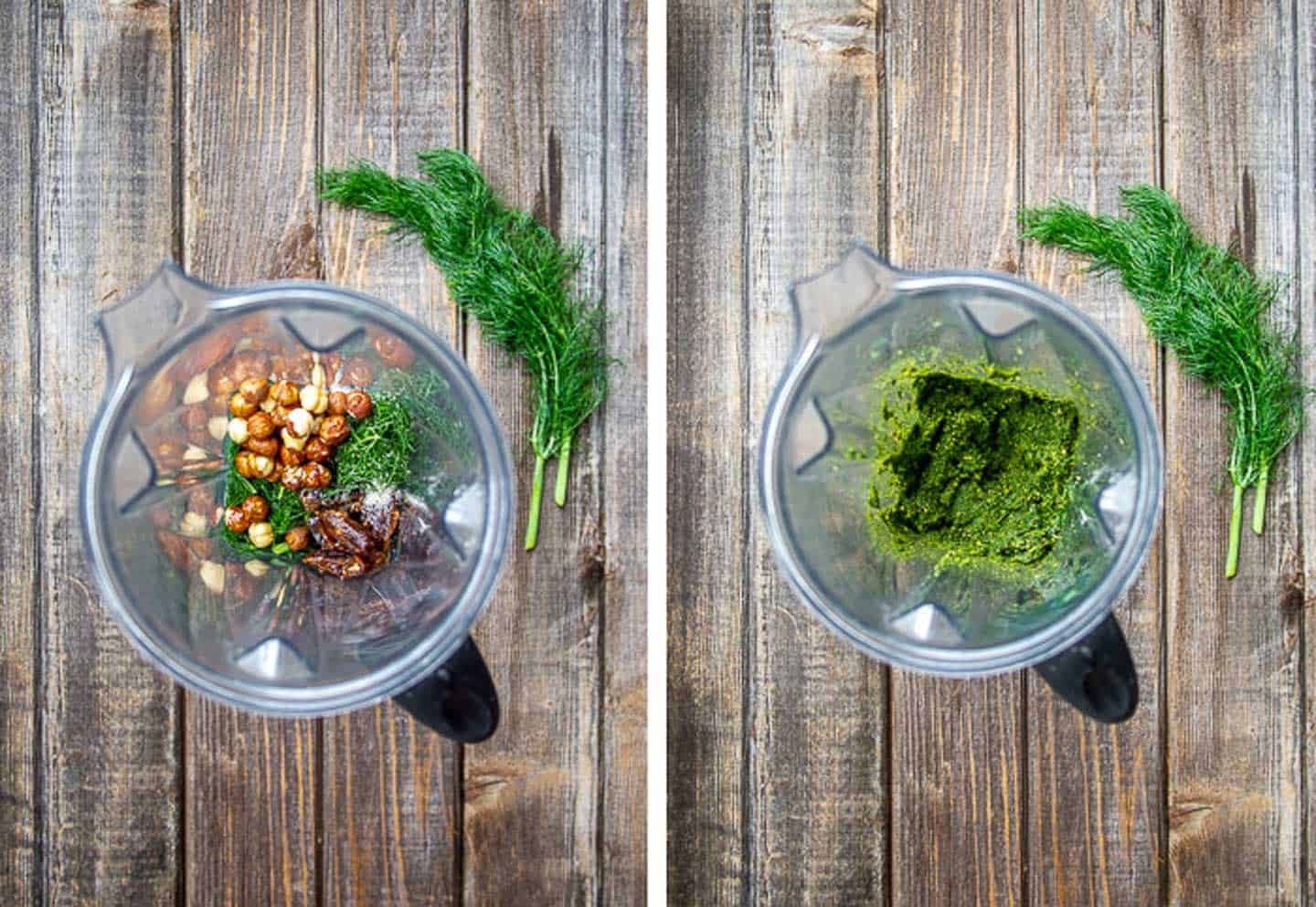
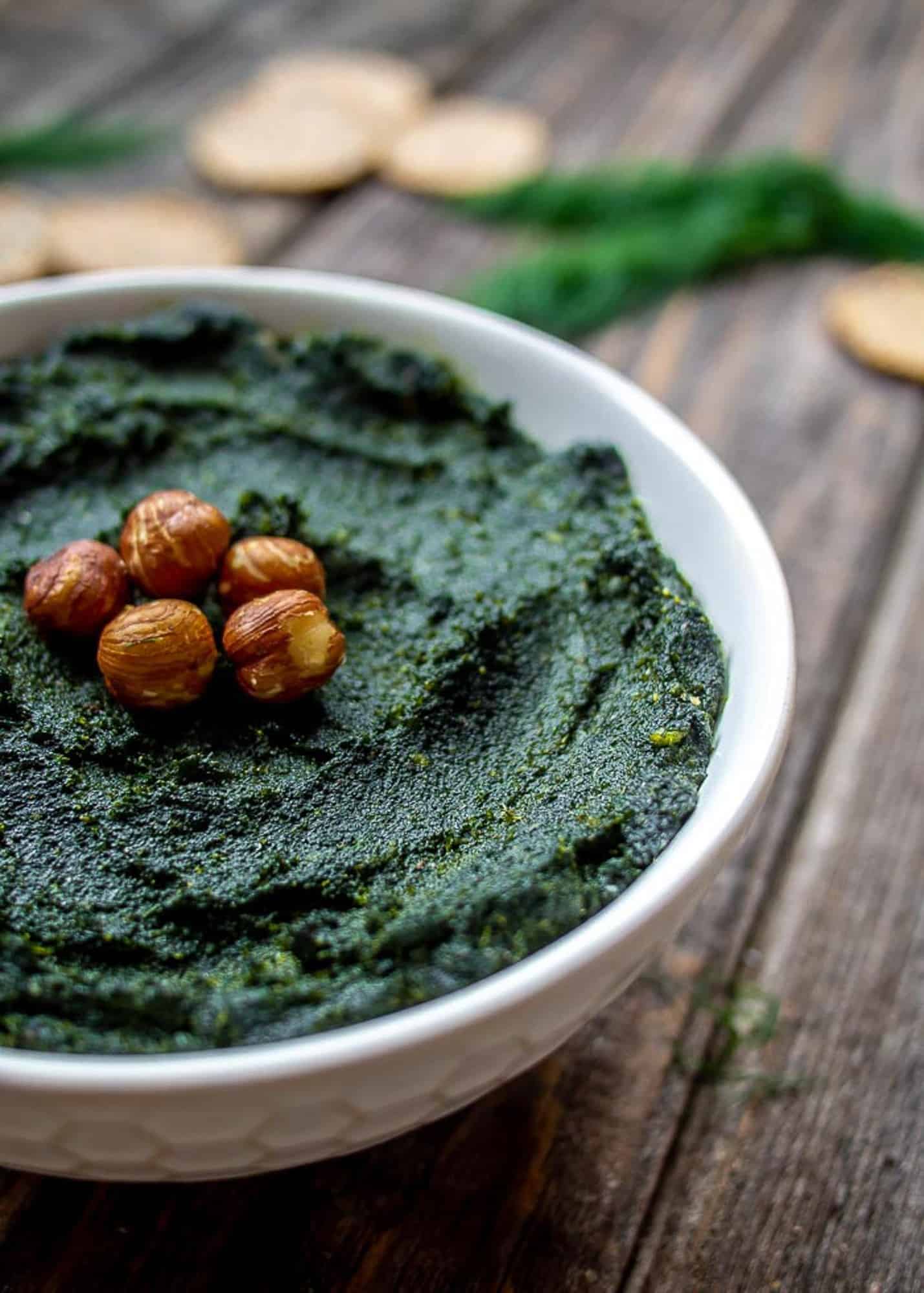
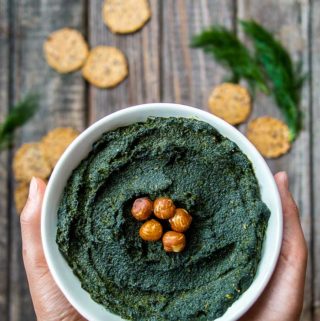
I absolutely loved this recipe! I substituted dried apricots for dates since I didn’t have any dates and have made it with cashews and another time with almonds since I didn’t have hazelnuts. All of it turned out excellent and I feel lucky to live in a place with an abundance of wild fennel!